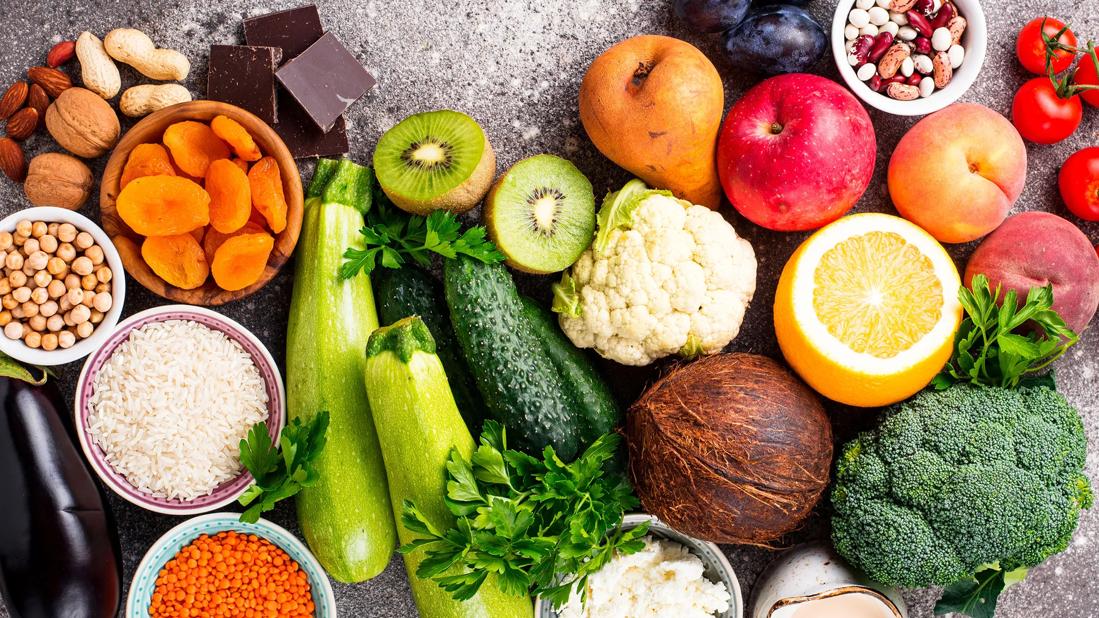This approach is all about eating foods that don’t spike your blood sugar quickly

In a world where a new “trendy diet” or “way of eating” pops up almost every day, it can be confusing to sort through all the noise.
Advertisement
Cleveland Clinic is a non-profit academic medical center. Advertising on our site helps support our mission. We do not endorse non-Cleveland Clinic products or services. Policy
If you’re looking for some guidance on how to incorporate healthy eating into your daily life, you may have considered following a low glycemic index diet.
Centered around how certain foods affect your blood sugar levels using the glycemic index, a low glycemic index diet may be a helpful tool to understand how food impacts your health.
The glycemic index catalogues food based on their amount of carbohydrates and how those carbs react in your body. The scale is 0 to 100. Foods can fall into one of three categories:
But is a low-glycemic index diet the right choice for you?
Registered dietitian Anthony DiMarino, RD, LD, explains how a low glycemic index diet works, its benefits and its potential drawbacks.
A low glycemic index diet is one based on foods that won’t cause wild swings in your blood sugar.
“Eating foods with a lower glycemic index means they’ll cause a slower and lower rise in your blood sugar,” DiMarino says, noting that this will help you absorb food more slowly and stay full longer and, therefore, eat less. “Foods with a high glycemic index, or simple sugars, give you this quick burst of energy with a rise in blood sugar quickly. But then, you’ll tend to feel pretty tired afterward and will get hungry quickly.”
Advertisement
Certain kinds of foods fall into these categories — for example, foods higher in fat and protein tend to be absorbed more slowly, so they have a lower glycemic index.
Research shows that a low glycemic index diet may come with potential benefits such as:
There aren’t many downsides to a low glycemic index diet, save for a few exceptions.
For example, if you’re already on insulin and drastically change the way you eat without changing insulin dosages, this could put you at increased risk for low blood sugar. Additionally, if your cholesterol increases after going on a low-carb diet (for example, the keto diet), a low glycemic index diet also might not be the best choice.
Another factor? The glycemic index isn’t necessarily a measure that’s easy to use as a nutrition guide, the way that you can with calories.
And foods with a low glycemic index aren’t necessarily packed with nutrients. Eating a balance of foods from all five food groups — fruits, vegetables, grains, proteins and dairy — is still a better rule to follow.
Low glycemic index foods are ones with a number that’s 55 or less. Some of these include:
High glycemic index foods — ones that spike your blood sugar quickly — are the usual suspects like pizza, chips, cookies and doughnuts.
Worth noting? Only foods that contain carbs are in the glycemic index of foods database. So, foods such as beef, chicken, fish and eggs won’t be included in the database.
While there’s an upside to using the low glycemic index diet as a guide, the American Diabetes Association’s assessment says that the glycemic index numbers are “not easily accessible for meal planning.”
Advertisement
“The best way to use the glycemic index is just as a comparison. If you’re trying to choose between two items, it can help you pick the lower glycemic item over the high glycemic item,” says DiMarino. “You want to eat a well-rounded, healthy diet that is composed of all the food groups.”
Advertisement
Learn more about our editorial process.
Advertisement

If you have diabetes, working out soon after eating can help lower your blood sugar

Focus on eating more whole grains, lean proteins, fruits and vegetables, and fewer processed foods and saturated fats

One is a supplement, the other is a prescription medication — both may be useful in managing Type 2 diabetes, but one has more research

You can use this index to help identify which foods can cause wild swings in your blood sugar

Diet adjustments and exercise can help, as can asking your doctor about medication changes

Nausea, diarrhea and bloating may be common at first, but more serious signs like dizziness or muscle pain should be addressed immediately

Exercising more, eating healthier and managing weight can significantly improve insulin sensitivity

These simple sugars give us energy, but they can also raise blood sugar levels

Start having sex about 72 hours before ovulation, then at least every other day during your fertile window

Attachment theory suggests that your earliest relationships shape connections throughout your life

It isn’t a recognized mental health disorder, but research shows that problematic social media use can negatively affect your mental health, self-esteem and sleep